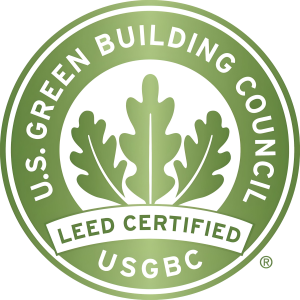Developers in the office market are more motivated than ever to address sustainability in the built environment. A LEED-certified project is a third party–verified green building. When landlords and tenants use the rating system, they take key steps to ensure, first and foremost, the office building is a healthy place to work. Key LEED prerequisites ensure that ventilation and filtration systems are optimal, that healthy chemicals are used for cleaning, and that the indoor air is free from tobacco smoke.
Motivators for enhancing the resilience of our built environment have also been abundant: In recent years, highly visible natural disasters, such as greater Los Angeles fires in 2025, Hurricane Helene in 2024 and floods in Spain in 2024, have captured our attention. We also see more and more robust ESG goals being driven by investors and occupants. A LEED-certified project equals action and accountability.
When we look to the future, we see these trends not only continuing, but accelerating. In addition, having healthy, high-performing office spaces, we are now focused on meeting critical demands to decarbonize. The commercial real estate market is successfully working on incorporating low-carbon strategies for their existing buildings.
We also see electric grids are getting cleaner every year, globally approximately 30% of our energy is now provided by renewables. One grid at a time, we are reducing reliance on coal-fired plants. It is motiving to see these changes come to fruition in both buildings and the utility grid.
We faced challenges during the pandemic, and we came out stronger, with a more targeted focus on sustainability. This optimism is motiving and will fuel the momentum behind LEED v5 in 2025. This rating system brings a road map
https://www.usgbc.org/articles/office-market-leed-om-certification-trends-point-low-carbon-future

